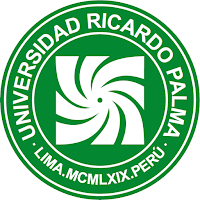«Courageous memory, sad singing skeleton»: The house and the experiences of being in Trilce (1922) by César Vallejo
«Courageous memory, sad singing skeleton»: The house and the experiences of being in Trilce (1922) by César Vallejo «Courageous memory, sad singing skeleton»: The house and the experiences of being in Trilce (1922) by César Vallejo
Article Sidebar
Main Article Content
Miguel Ángel Carhuaricra Anco
Abstract
This article explores the meanings of the house in César Vallejo’s Trilce. The guiding idea of this study is that in poems «XXVII», «XXVIII» and «LXI», poetic images disclose affective senses of the house and connote connection, restitution, and understanding of the self. For this purpose, we first take stock of the image-centered appreciations in Trilce; then we explain the conception of poetic image and house from Gaston Bachelard's phenomenology of imagination, and we delineate the features of the poet's home from Danilo Sánchez Lihón's evocation. Subsequently, we analyze and interpret the poetic images of the mentioned poems; and, finally, we reflect on the transcendence of the poetic image for the understanding of Trilce.
Article level metrics
Downloads
Metrics
Article Details

This work is licensed under a Creative Commons Attribution 4.0 International License.
La revista utiliza una licencia Creative Commons para mostrar a los lectores y a los usuarios cómo se pueden utilizar los contenidos publicados.
Los contenidos publicados en la revista están bajo una licencia CC-BY 4.0, la cual permite:
- Compartir, copiar y redistribuir el material en cualquier medio o formato.
- Adaptar, remezclar, transformar y construir a partir del material para cualquier propósito, incluso comercialmente.
Bajo los siguientes términos:
- Atribución. Usted debe dar crédito de manera adecuada, brindar un enlace a la licencia, e indicar si se han realizado cambios. Puede hacerlo en cualquier forma razonable, pero no de forma tal que sugiera que usted o su uso tienen el apoyo de la licenciante.
La información de licencia se muestra e incrusta en las páginas de artículos y en ficheros de texto completo como sigue:
«Este obra está bajo una licencia de Creative Commons Reconocimiento 4.0 Internacional».
Altamirano, N. (1999). Vallejo: poeta corporal del alma. Una lectura psicoanalítica. Universidad Nacional Mayor de San Marcos.
Bachelard, G. (2000). La poética del espacio. Fondo de Cultura Económica.
Coyné, A. (1989). César Vallejo. Ediciones SEA.
Fernández, C. (2014). Las técnicas argumentativas y la utopía dialógica en la poesía de César Vallejo. Cátedra Vallejo.
Ferrari, A. (1997). El universo poético de César Vallejo. Universidad de San Martín de Porres.
Ferrater, J. (1995). Diccionario de filosofía de bolsillo I-Z. Alianza Editorial.
Franco, J. (1984). César Vallejo. La dialéctica de la poesía y el silencio. Editorial Sudamericana.
Lapesa, R. (1981). Introducción a los estudios literarios. Cátedra.
Martos, M. (2013). Poéticas de César Vallejo. Academia Peruana de la Lengua y Universidad Nacional Mayor de San Marcos.
Pallares, R. (2016). La «trilzura» de César Vallejo. En G. Flores y A. Echevarría (eds.), Vallejo 2016. Actas del Congreso Internacional Vallejo Siempre (pp. 65-76). Editorial Cátedra Vallejo.
Samaniego, A. (1954). César Vallejo: su poesía. Editorial Sudamérica.
Sánchez, D. (2001). Intensidad y altura en César Vallejo. Instituto del Libro y la Lectura del Perú.
Sánchez, D. (2008). Vallejo: yo que solo he nacido. Testamento del padre. Instituto del Libro y la Lectura del Perú.
Sicard, A. (2015). César Vallejo, el poeta de la carencia. Cátedra Vallejo.
Thorne, C. (1994). La búsqueda del ser en la poética de Trilce. En J. Cornejo y C. López (eds.), Actas del Coloquio Internacional Vallejo: su tiempo y su obra. Tomo I (pp. 173-177). Universidad de Lima.
Vallejo, C. (1991). Obras completas. Tomo I: Obra poética (edición crítica de R. González Vigil). Banco de Crédito del Perú.
Yurkievich, S. (1971). Trilce XXVIII. En Á. Flores (comp.), Aproximaciones a César Vallejo. Tomo II (pp. 153-161). Las Américas.
Yurkievich, S. (1978). Fundadores de la nueva poesía latinoamericana: Vallejo, Huidobro, Borges, Neruda, Paz. Barral Editores.
Most read articles by the same author(s)
- Miguel Ángel Carhuaricra Anco, «How they had beaten him!»: the disappearance of childhood in César Vallejo’s short stories , Archivo Vallejo: Vol. 7 No. 13 (2024): January - June
- Miguel Ángel Carhuaricra Anco, Miguel Pachas Almeida, ¡Yo que tan solo he nacido! (A biography of César Vallejo). Lima: Editorial Gutemberg, 2018, 647 pp. , Archivo Vallejo: Vol. 2 No. 3 (2019): January - June
- Miguel Ángel Carhuaricra Anco, Presencia y emoción: la educación estética en los poemas infantiles de César Vallejo , Archivo Vallejo: Vol. 1 No. 2 (2018): July - December
- Miguel Ángel Carhuaricra Anco, Cultura Infantil and The Black Heralds (1918): the Pedagogical-Poetic Itinerary of César Vallejo , Archivo Vallejo: Vol. 3 No. 5 (2020): January - June










